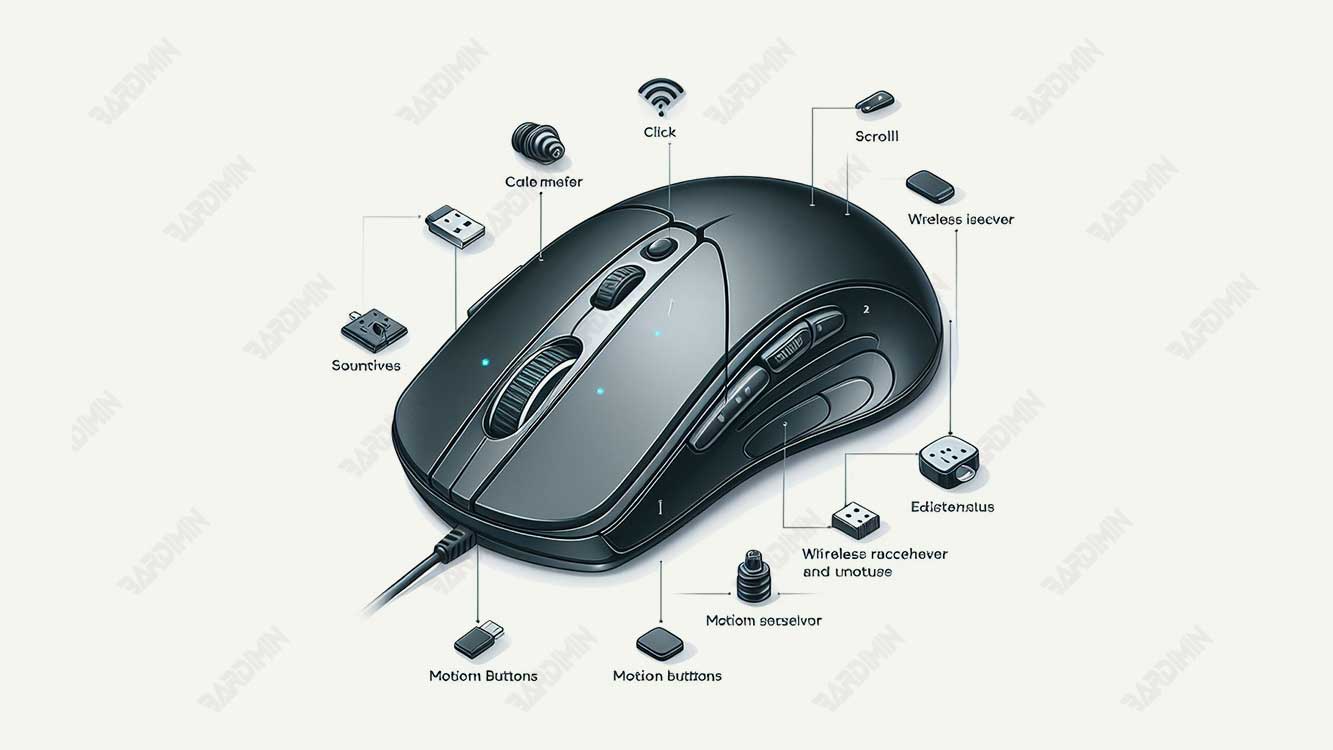A computer mouse is one of the most common input devices used to operate and interact with a computer. A computer mouse allows you to move the cursor on the screen, select and click on icons, menus, buttons, and text, as well as perform various other functions. A computer mouse is essential for running various applications, such as games, graphic design, text editing, and others.
However, do you know how a computer mouse works? What are the parts of a computer mouse and what do they do? How to choose a computer mouse that suits your needs? This article will answer those questions and give you complete and in-depth information about computer mice.

A Brief History of the Computer Mouse
The computer mouse was first invented by Douglas Engelbart in 1963 at the Stanford Research Institute. Early computer mice took the form of wooden boxes with two metal wheels that detected mouse movements over flat surfaces. This computer mouse is connected to the computer via cable and has one button at the top.
In 1972, Bill English developed a computer mouse that used rubber balls instead of metal wheels. This computer mouse is easier to move and more accurate in detecting movement. This computer mouse also has two buttons at the top.
In 1980, Steve Jobs saw a computer mouse made by Xerox PARC and was inspired to create a cheaper and simpler computer mouse for Apple personal computers. This computer mouse has only one button and uses a plastic ball instead of a rubber ball.
In 1984, Logitech introduced the wireless mouse that used radio waves to communicate with the computer. This computer mouse does not require cables and is more flexible in its use.
In 1998, Microsoft launched an optical computer mouse that uses light beams to detect mouse movement over surfaces. These computer mice do not require balls or wheels and are more precise and durable.
In 2004, Logitech re-developed a laser computer mouse that uses laser light to detect mouse movement over surfaces. These computer mice are more sensitive and can be used on different types of surfaces, even glass.
Today, computer mice have undergone many developments and variations, in shape, size, color, number of buttons, features, and technology. The computer mouse has also become an integral part of the computer experience for many people.
Computer Mouse Parts and Their Functions
A computer mouse consists of several main parts, namely:
- Left and right buttons: These buttons are used to select and click objects on the screen, such as icons, menus, buttons, and text. The left button is usually used to click the object once (single-click) or twice (double-click), while the right button is usually used to open a context menu that displays options related to the object clicked. The left and right buttons can also be used to perform other functions, such as dragging and dropping objects, highlighting text, and others.
- Center button or scroll wheel: This button is a wheel that can be moved up or down to scroll pages or documents on the screen. This button can also be used to click objects on the screen, such as opening a link in the browser. This button can also be used to perform other functions, such as zooming in or out (zooming) images, changing the viewing angle (view) in games, and others.
- Additional buttons: Some computer mice have additional buttons next to the left and right buttons, such as front and back buttons, DPI buttons, macro buttons, and others. These buttons can usually be programmed to perform certain functions, such as moving between web pages, changing mouse sensitivity, executing macro commands, and others.
- Motion sensor: This sensor is located at the bottom of the mouse and serves to detect mouse movement on the surface. These sensors can be balls, wheels, lights, or lasers, depending on the type of mouse. These sensors send movement signals to the computer, which then translate into cursor movement on the screen.
- Cable or wireless receiver: A cable or wireless receiver serves to connect the mouse to the computer. The cable usually connects with a USB, PS/2, or serial port on the computer. Wireless receivers usually connect with a USB port on a computer and receive radio wave signals from the mouse. Wireless mice also require batteries to supply power.

